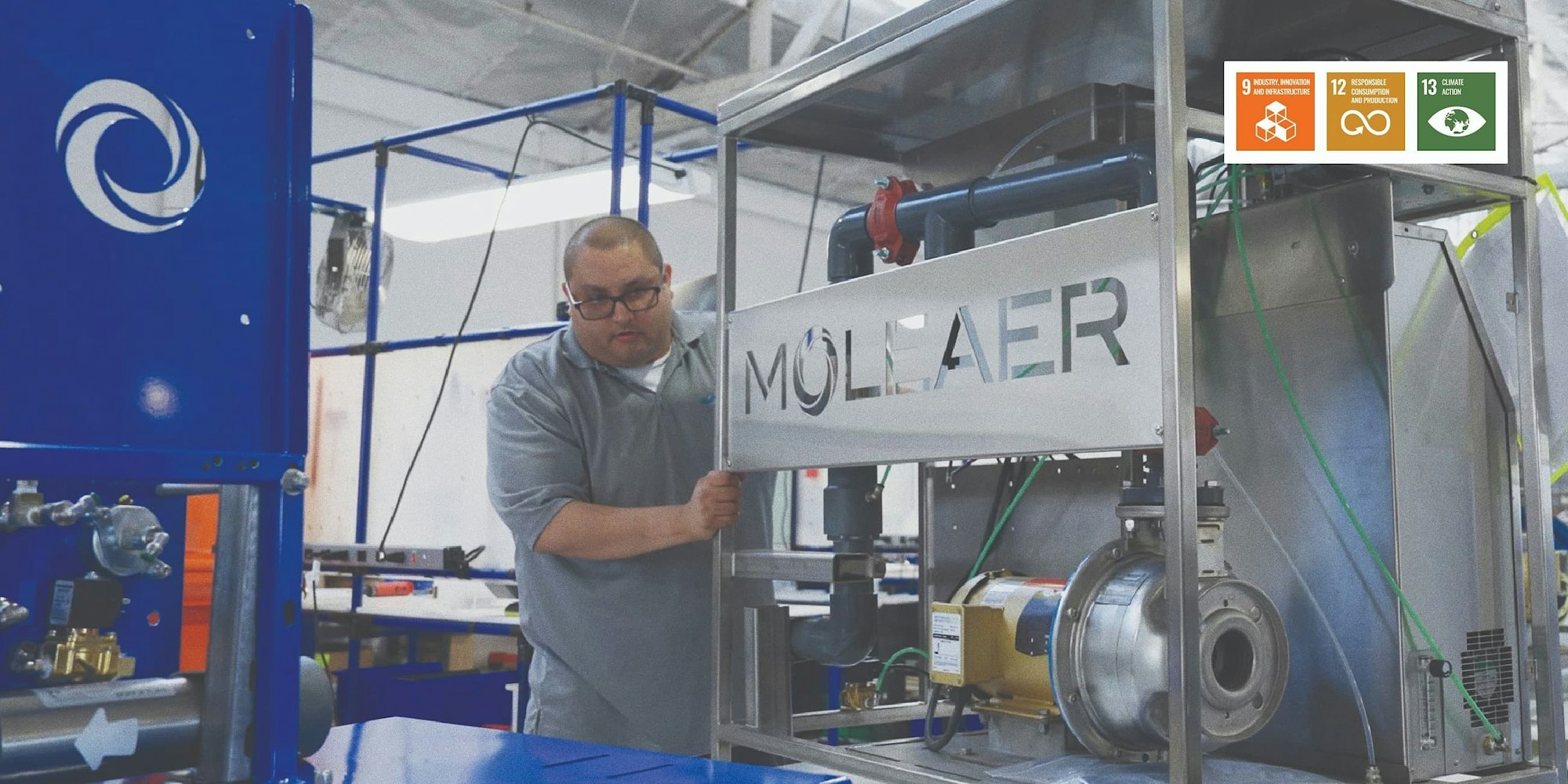Moleaer
Nanobubble Technology Company Enhancing Water To Protect Food & Natural Resources

“Our mission is to help industries powered by water to do more with less. We know that water security leads to energy and food security for a growing planet with finite resources. Without water, you can’t grow any food and you can’t mine materials, whether its oil coming out of the ground or copper coming out of a heap, so we focus on how to make industries utilize this precious, ever-finite resource, more efficiently.”
— Nick Dyner, CEO of Moleaer
Oceans Near-Term Outcome #5:
Blue products and solutions effectively address a range of customer needs, spurring further ocean-focused innovation.
Primary SDGs:
9. Industry, Innovation, and Infrastructure
12. Responsible Consumption and Production
13. Climate Action
Type of Financing:
Direct Investment
S2G Investments
The Problem
Global temperatures are rising, resulting in the deterioration of water quality and increased food scarcity. Innovative solutions are needed to improve water quality and increase food production in a sustainable way to address these major challenges.
The Approach
Nanobubbles are tiny bubbles, invisible to the naked eye and 2,500 times smaller than a single grain of table salt. Due to their size and structure, nanobubbles are effective at improving water quality, enhancing water treatment processes, and improving productivity in industrial and agricultural applications. Moleaer developed the first-ever nanobubble generator that can perform cost-effectively at municipal and industrial scales. Moleaer’s patented nanobubble technology provides the highest proven oxygen transfer rate in the aeration and gas infusion industry, with an efficiency of over 85% per foot of water.
The Impact
Moleaer is proving that nanobubbles are a chemical-free and cost-effective solution to increase sustainable food production, restore aquatic ecosystems, and improve natural resource recovery. Moleaer has deployed more than 2,400 nanobubble generators in over 52 countries worldwide since 2016. They are being used to treat water in a variety of contexts, from greenhouses to reservoirs to fish hatcheries.
